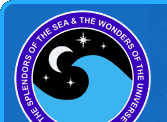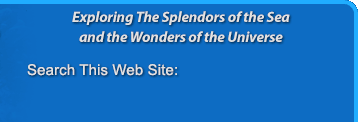1910


1912
Scripps Institute
Scripps Institution of Oceanography becomes affiliated with the University of California. Scripps is one of the world's leading marine research centers and is located in La Jolla, California, just north of San Diego. This merger with the University of California allows the institute to expand its scope to include studies of the physics, chemistry, geology, biology, and climate of Earth.

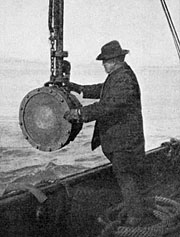
NOAA Public Domain Image
April 27, 1914
First Acoustic Exploration of the Sea Floor
Canadian inventor Reginald Fessenden uses an oscillator to bounce sound waves between an iceberg and the sea floor. This test marks the beginning of acoustic exploration of the sea. This technology will eventually lead to the development of sonar, allowing submarines to signal each other and allowing ships to detect icebergs.

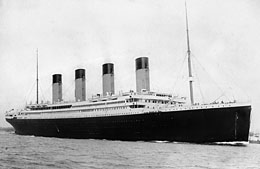
Wikipedia Public Domain Image
April 15, 1912
Titanic Sinks
The White Star Liner RMS Titanic sinks after striking an iceberg in the North Atlantic Ocean. Over 1,500 passengers lose their lives during one of the worst peacetime maritime disasters in history. This terrible tragedy leads to a concerted effort to devise an acoustic means of discovering objects in the water ahead of a moving vessel.
1920

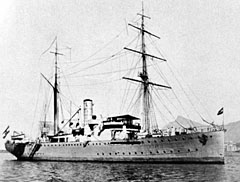
Wikipedia Public Domain Image
1925
Mapping the Ocean Floor
The German vessel Meteor sails around the Atlantic Ocean taking detailed measurements of the ocean floor using echosounding equipment. These voyages reveal new information about the shape and structure of the ocean floor.
1930

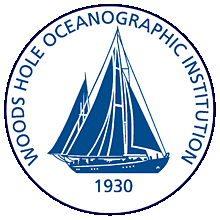
1930
Woods Hole Oceanographic Institution
In Cape Cod, Massachusetts, the Woods Hole Oceanographic Institution is founded. This private, nonprofit higher education facility will eventually become one of the world's leading oceanographic research institutions.

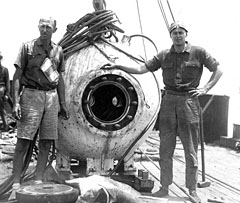
Wikipedia Public Domain Image
1934
First Deep Ocean Dive
William Beebe and Otis Barton embark on a deep sea expedition in a tethered sphere known as a bathysphere. They reach a depth of a 3,000 feet (914 meters) off the coast of Bermuda and discover a previously unseen world of bizarre, luminescent creatures.

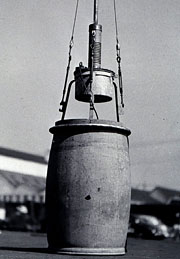
NOAA Public Domain Image
1935
Sonobuoy Developed
Researchers at the Coast and Geodetic Survey invent an automatic telemetering radio sonobuoy. This instrument eliminates the need for manned station ships during Radio Acoustic Ranging (RAR) navigation operations. This sonobuoy is considered to be the first offshore moored telemetering instruments. These buoys weigh 700 pounds (317.5 kg) and can be deployed or recovered by Coast and Geodetic Survey ships in only five minutes.

1937
Bathythermograph Invented
Geophysicist and oceanographer Athelstan Spilhaus invents the bathythermograph. It is a is a small torpedo-shaped device that holds a temperature sensor and a transducer to detect changes in water temperature versus depth down to a depth of approximately 935 feet (285 meters). The invention's name stands the test of time, and is still in use today.
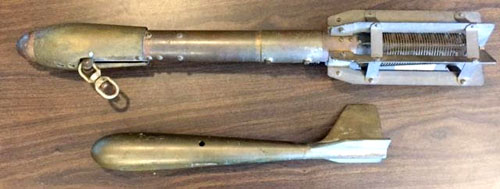
USGS Public Domain Image

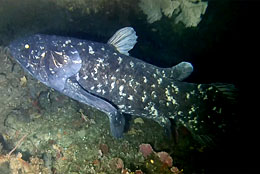
Bruce A.S.Henderson / CC BY-SA 4.0
1938
Live Coelacanth Discovered
Fishermen off the coast of South Africa pull up a five-foot fish later identified as a coelacanth. This fish is a true living fossil thought to be extinct since the days of the dinosaurs. Since this discovery was made, several other live coelacanth have been discovered in African coastal waters and some have been photographed in their underwater habitat.
1940

1941
World War II Research
During World War II, electronic navigation systems are developed for precision bombing. A few years later, the Coast and Geodetic Survey conducts its first hydrographic surveys using these systems. Research during the war leads to many new tools for ocean exploration, including deep-ocean camera systems, early magnetometers, sidescan sonar instruments, and early technology for guiding Remotely Operated Vehicles (ROVs).

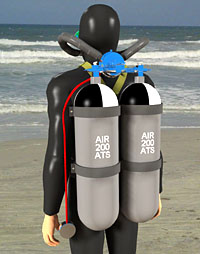
Wikipedia Public Domain Image
1943
The Aqua-Lung
Underwater explorers Jacques Cousteau and Emile Gagnan develop the first modern scuba system. They modify a breathing regulator to create the Aqua-Lung. This ground breaking invention allows divers to stay underwater for extended periods and more effectively explore the ocean realm. This single event revolutionizes the science of underwater exploration.

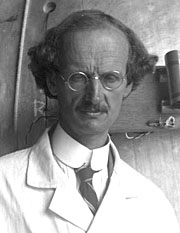
Bundesarchiv, Bild 102-13738
CC-BY-SA 3.0
1948
First Untethered Deep Water Craft
Swiss physicist Auguste Piccard dives in his newly designed vehicle called a bathyscaphe. Known as FRNS-2, it is the first untethered craft to carry people into the deep waters of the ocean. It sets several world diving records, beating those of the bathyspheres, since no unwieldy cable is required for diving. Piccard's son, Jacques Piccard, would soon take the bathyscaphe to the deepest point in the ocean.
